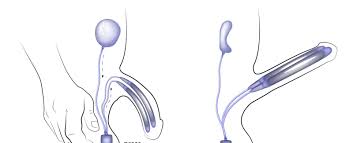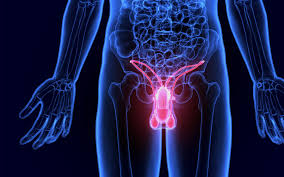House No.-47, Sector 52 Near Gate No.-3, Ardee City Gurugram -122003



Penile implants are devices placed inside the penis to allow men with erectile dysfunction (ED) to get an erection. Penile implants are typically recommended after other treatments for ED fail.
There are two main types of penile implants, semirigid and inflatable. Each type of penile implant works differently and has various pros and cons.
The placement of penile implants requires surgery. Before choosing penile implants, make sure you understand what surgery involves, including possible risks, complications and follow-up care.


For most men, erectile dysfunction can be successfully treated with medications or use of a penis pump (vacuum constriction device). You might consider penile implants if you aren't a candidate for other treatments or you can't get an erection sufficient for sexual activity by using other methods.
Penile implants can also be used to treat severe cases of a condition that causes scarring inside the penis, leading to curved, painful erections (Peyronie's disease).



👉🏿 Inflatable implants. Inflatable devices, the most common type of penile implant, can be inflated to create an erection and deflated at other times. Three-piece inflatable implants use a fluid-filled reservoir implanted under the abdominal wall, a pump and a release valve placed inside the scrotum, and two inflatable cylinders inside the penis.
To achieve an erection, you pump the fluid, which is salt water, from the reservoir into the cylinders. Afterward, you release the valve inside the scrotum to drain the fluid back into the reservoir.
The two-piece model works in a similar way, but the fluid reservoir is part of the pump implanted in the scrotum. In both devices, the reservoir is filled with salt water the day of surgery and remains in the device.
👉🏿 Semirigid rods. Semirigid devices are always firm. The penis can be bent away from the body for sexual activity and toward the body for concealment.
A positionable penile implant is a semirigid device with a central series of segments held together with a spring on each end. It can maintain upward and downward positions better than other semirigid rods can.


When choosing a type of penile implant, consider your personal preference and your medical history. Your health care provider might suggest one type of design over another based on your age, risk of infection, and health conditions, injuries or medical treatments you've had.
| Type of penile implant | Pros | Cons |
|---|---|---|
|
Three-piece inflatable |
|
|
|
Two-piece inflatable |
|
|
|
Semirigid rod |
|
|
Before penile implant surgery you might also need to:


Penile implant surgery is usually done at a surgery center or hospital. Your health care provider might give you medication to make you unconscious during the surgery (general anesthesia) or medication that blocks pain in the lower part of your body (spinal anesthesia).
Your health care provider will give you IV antibiotics to help prevent infection. The surgery site will also be washed with an alcohol-based antibiotic solution and shaved before surgery to reduce the risk of infection.
A tube (catheter) might be inserted into your bladder via your penis to collect urine at some point during surgery. Your surgeon will make an incision below the head of the penis, at the base of the penis or in the lower abdomen.
Next, your surgeon will stretch the spongy tissue in the penis that would normally fill with blood during an erection. This tissue is inside each of two hollow chambers called the corpora cavernosa.
Your surgeon will choose the correct size implant and place the implant cylinders inside your penis. All sizes are customized to your body measurements.
If your surgeon is implanting a two-piece inflatable device, a pump and valve are placed inside the scrotum. For a three-piece device, he or she will also implant a fluid reservoir above or under the abdominal wall using the initial incision. Sometimes a second incision in the abdomen in used.
Once the device is in place, your surgeon will sew the incisions closed. Penile implant surgery usually takes 45 minutes to an hour.
After penile implant surgery, you'll likely need to take medications to ease pain. Often a long-acting injection is given into the scrotum to help reduce pain for 48 to 72 hours. Mild pain might persist for several weeks. You might be given an antibiotic to be taken by mouth for a week.
Ask your health care provider when you can resume your regular activities. Most men can resume strenuous physical activity and sexual activity about 4 to 6 weeks after surgery.
After you learn how to use the device, usually 3 to 6 weeks after surgery, your health care provider might recommend inflating and deflating inflatable penile implants to give you practice using them and stretch the area surrounding the cylinders.
Although penile implants are the most invasive treatment for erectile dysfunction, most men who have them and their partners report satisfaction with the devices. In fact, penile implants have the highest rate of satisfaction of all erectile dysfunction treatments.